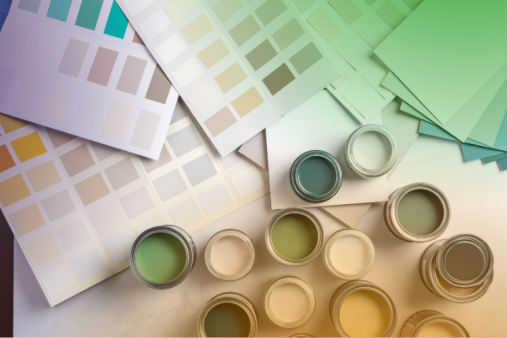Introduction to Wall Friezes
Creating a wall frieze is one of the most rewarding DIY home projects you can dive into. Whether you're going for a classic Greek vibe, a modern twist, or something totally whimsical, friezes add depth, dimension, and character to your walls like nothing else. You’ve probably seen them in museums, old architectural buildings, or even in trendy interior designs. But don’t worry—making one doesn’t require a degree in fine arts or a fortune in materials. You just need a bit of creativity, some elbow grease, and the right guidance (which you’re about to get here).
What is a Wall Frieze?
A wall frieze is essentially a decorative horizontal band that runs across a wall—typically near the top or middle. It can be painted, carved, or made from various materials such as plaster, wood, or even foam. Think of it as the decorative belt of a wall—it ties things together, brings visual balance, and often tells a story or sets a theme. In ancient architecture, friezes depicted mythological scenes or historical events. In today’s homes, they might showcase floral designs, geometric patterns, or abstract art.
The beauty of a wall frieze lies in its versatility. You can make one that stretches across your entire living room or just frame a cozy reading nook. Whether you want it to pop with color or blend into your décor, it’s totally up to you. And because you’re crafting it yourself, it’ll be a one-of-a-kind piece that reflects your personal style.
History and Origins of Friezes
Friezes date back thousands of years. The Greeks and Romans were masters of architectural friezes, often incorporating them into temples and public buildings. These friezes weren't just decorative—they were storytelling tools. The Parthenon in Athens, for example, features one of the most famous friezes in the world, depicting a grand procession of people, gods, and animals.
In the Renaissance, friezes made a big comeback, adorning churches, palaces, and homes. Artists like Michelangelo and Raphael used them to add grandeur and sophistication to interiors. Today, we see friezes evolve into something much more accessible and diverse. From minimalist lines to intricate 3D art, friezes can fit into any design language.
Understanding this history adds a layer of appreciation to your own project. You're not just crafting a wall decoration—you're continuing a rich, centuries-old tradition of art and architecture.
Planning Your Wall Frieze
Before jumping into painting or sculpting, proper planning is crucial. A well-thought-out wall frieze not only looks better but also saves you time, effort, and costly mistakes. Start by figuring out what you want your frieze to express. Is it purely aesthetic? Do you want it to add texture or dimension? Or maybe it's telling a story?
Choosing a Theme or Concept
This is the fun part—imagination time! Start by deciding what vibe you want the frieze to bring into your space. Here are some popular theme ideas:
-
Nature-Inspired: Leaves, vines, flowers, birds—great for a serene, calming effect.
-
Geometric Patterns: Perfect for modern or contemporary spaces.
-
Historical or Mythological: For a classical or vintage aesthetic.
-
Abstract Art: Adds boldness and personality.
-
Kids' Themes: Think animals, cartoon clouds, or space rockets for nurseries or playrooms.
Once you’ve chosen a general idea, create a mood board using Pinterest or a simple sketchpad. Collect references and inspiration photos. This will help guide your color palette, style, and even your choice of materials. Remember, the frieze should complement your existing décor, not clash with it.
Deciding the Placement and Size
Next up—where and how big? Typically, friezes run horizontally near the ceiling (crown molding height) or around the mid-wall (chair rail height). But don’t feel limited. You can even place a frieze just above doorways, around mirrors, or as a border around a mural.
Use painter’s tape to map out the size and placement. Stand back and visualize. Does it look balanced? Does it frame the room nicely? Friezes typically run 6 to 24 inches tall, depending on the room’s proportions. In smaller rooms, go for slimmer bands; in larger spaces, you can go bolder and wider.
Pro tip: Avoid placing a frieze too close to electrical outlets or light switches unless you plan to creatively work them into the design.
Materials and Tools You’ll Need
Let’s talk gear. The right materials and tools can make or break your project. And trust me, there's nothing worse than being halfway through your masterpiece and realizing you're missing a crucial item.
Essential Materials for DIY Friezes
Depending on the style you’re going for—painted, sculpted, stenciled, or assembled—your material list may vary slightly. Here’s a general breakdown:
-
Paints: Acrylics or latex paints for durability and color richness.
-
Plaster or Joint Compound: For raised, 3D effects or sculpted friezes.
-
Wood Panels or MDF: If you’re creating a base for carvings.
-
Stencils: Perfect for intricate, repetitive designs.
-
Wallpaper Borders: A quick, stylish shortcut option.
-
Painter’s Tape: To mark boundaries cleanly.
-
Adhesives: Wood glue, construction adhesive, or plaster of Paris.
-
Sealant/Topcoat: To protect your finished work.
Buy slightly more material than you think you’ll need—mistakes happen, and backups are lifesavers.
Recommended Tools and Safety Equipment
Working smart means working safe. Gather these before starting:
-
Sketchpad & Pencil: For planning your design.
-
Level and Ruler: To keep lines and patterns straight.
-
Trowel or Spatula: For applying plaster.
-
Brushes/Rollers: Different sizes for detailing and coverage.
-
Sanding Block: To smooth any rough patches.
-
Utility Knife or X-Acto Blade: For trimming stencils or materials.
-
Drop Cloths: Keep your floors and furniture clean.
-
Gloves and Mask: Especially when dealing with plaster or paint fumes.
Keeping everything organized before you start will keep your workflow smooth and stress-free.
Designing Your Wall Frieze
Here’s where the magic starts taking shape. Designing your wall frieze involves turning your concept into something visual, and then refining it until it feels just right.
Sketching and Drafting the Layout
Start by sketching your design on paper. Don’t worry if you’re not a great artist—this is just to get the proportions and flow down. Use grids if it helps you visualize spacing. Once you're happy with the design, transfer it to the wall using a light pencil outline or a projector if you have one.
If you’re using stencils, tape them up and mark where each one will go. This part is especially crucial for repeating patterns—you want consistency and symmetry. Think of it as drawing your blueprint before you break ground.
Make sure your layout flows naturally across the wall. Whether it’s a repeating floral motif or a story unfolding panel by panel, everything should connect visually. Use painter’s tape to map out top and bottom borders.
Creating a Color Palette and Texture Plan
Your frieze’s colors should work with your room’s existing palette. Neutral friezes can add texture without being overwhelming, while vibrant hues can act as a room’s centerpiece.
Test your chosen paints or materials on a scrap piece or an inconspicuous wall area. Watch how the colors look at different times of day under different lighting.
If you’re going for a textured or raised frieze, decide how much dimension you want. A subtle plaster curve or a bold wood-cut profile? Think about shadows, highlights, and how it will look from all angles.
Once your design is finalized and you’re confident in the materials and colors, you’re ready to bring it to life!
Preparing the Wall Surface
Before any paint or plaster touches the wall, preparation is key. A wall that hasn’t been properly prepped will sabotage even the best designs. Think of it like cooking—no matter how great your recipe is, if your ingredients are spoiled, the dish won’t turn out right.
Cleaning and Priming the Wall
Start by giving your wall a good cleaning. Dust, grease, and old paint flakes can prevent adhesion and mess with your final look. Use a mild detergent and water solution, or if the wall is especially dirty, a stronger degreaser like TSP (trisodium phosphate). Make sure to rinse thoroughly and let it dry completely.
Once it’s clean, apply a primer—especially if you’re painting or using plaster. Primer gives you a consistent base to work on and prevents your materials from soaking into the wall unevenly. If your wall has a glossy finish, lightly sand it first so the primer adheres properly.
Primer also helps your paint colors appear more vibrant and true. Use a roller for large areas and a brush for edges and corners. Let it dry thoroughly before starting the layout of your frieze.
Marking Guidelines for the Frieze
This is where precision matters. Grab your tape measure, level, pencil, and painter’s tape. Measure the height and placement you decided on earlier and lightly mark it along the wall. Use the level to draw perfectly straight horizontal lines—these will be your top and bottom borders.
If your frieze includes panels, scenes, or repeating designs, now is the time to measure and mark those divisions as well. For example, a floral border might repeat every 12 inches, while a storytelling frieze might have larger blocks spaced every 2 feet.
Use painter’s tape to outline the entire frieze area. Not only does this give you a visual frame to work within, but it also protects the rest of the wall from stray paint or plaster.
Once your guidelines are in place, take a step back and view the wall from different angles. Double-check the alignment and spacing before moving on—this part is all about accuracy, and it’s much easier to fix mistakes now than later.
Creating the Frieze: Painting Method
If you’re going the painted route, this step is all about bringing your vision to life using brushes, rollers, and maybe even some spray techniques. Painting a frieze is perfect if you want a 2D look with rich color and fine detail.
Freehand vs. Stenciling
Freehand painting gives you ultimate creative freedom. If you’re confident with a brush, you can create intricate scenes, flowing patterns, or unique motifs. It’s best for organic designs like vines, waves, or abstract swirls.
Stenciling, on the other hand, is ideal for repeating patterns or clean, geometric designs. You can either buy ready-made stencils or create your own using stencil sheets and a craft knife. Tape the stencil in place and use a small roller or sponge to dab the paint. Remove the stencil carefully and repeat across the wall.
Want the best of both worlds? Use a stencil for the base design and then add freehand embellishments or highlights to personalize it.
Layering and Shading Techniques
To give your painted frieze depth, consider layering colors. Start with your base tones, then add mid-tones and highlights using dry brushing or sponging techniques. For shading, use a slightly darker tone of your base color and blend with a soft brush to mimic shadows.
If your frieze features elements like leaves, flowers, or figures, shading and highlights can bring them to life. Just be sure to let each layer dry completely before adding another—patience pays off in the long run.
Detailing and Finishing Touches
Once your main design is complete, go in with smaller brushes to refine edges, add accents, and clean up any smudges. Metallic paints, glow-in-the-dark details, or pearlescent finishes can make certain parts pop. Just don’t overdo it—you want details to enhance the design, not overpower it.
When you’re happy with the final look, let everything dry for 24 hours. Then, apply a clear sealant or varnish to protect your artwork from moisture, dust, and wear. This is especially important in high-traffic or humid areas like hallways or bathrooms.
Creating the Frieze: Sculpted or Textured Method
Sculpted or raised friezes offer a tactile experience that painting can’t match. They literally bring your design off the wall, adding a dimensional wow factor that’s impossible to ignore.
Working with Plaster or Joint Compound
If you’re using plaster or joint compound, mix it to a workable consistency—not too thick or runny. Apply it to the wall using a trowel or spatula, and sculpt your design while the material is still wet. For intricate details, use clay sculpting tools or even everyday items like forks, spoons, or toothpicks.
If you're new to plaster, practice on a scrap board first. Sculpting directly on the wall gives a permanent effect, but it’s also less forgiving—so be confident in your design before committing.
For premade sculpted pieces (like floral medallions or decorative trim), use a strong adhesive or construction glue to fix them to the wall, then smooth the edges with joint compound to blend them in.
Drying and Sanding for Smooth Finish
Once the plaster is applied, allow it to dry completely. Depending on thickness and humidity, this could take 12 to 48 hours. Don’t rush it—painting over wet plaster can lead to cracks and peeling.
After it’s dry, inspect for rough patches or uneven areas. Use a fine-grit sanding block to smooth everything out. Wear a mask while sanding to avoid inhaling dust.
A second thin layer of compound can be added for additional detail or texture. This layer can also act as a base for paint if you want to give your frieze color.
Painting or Leaving It Natural
You can either paint your sculpted frieze or leave it in its natural plaster color. If you go for paint, apply a primer first, then use acrylic or latex paints. Dry brushing works great on textured surfaces—it highlights the raised areas while leaving the background darker for contrast.
Natural white plaster has a clean, elegant look, especially in modern or minimal spaces. Just be sure to seal it with a matte varnish to prevent chipping or staining over time.
Alternative Frieze Styles: Wallpaper and Mixed Media
Not every frieze has to be painted or sculpted by hand. If you're looking for a faster or more eclectic option, consider wallpaper borders or mixed media designs. These alternatives offer great results with less mess and are especially ideal for renters or those new to DIY.
Using Wallpaper Borders
Wallpaper borders are a quick and effective way to achieve a decorative frieze. They come in countless styles—from classic Victorian patterns to modern abstract motifs—and they’re easy to apply and remove. Here's how to use them effectively:
-
Measure your space accurately to determine how many rolls you’ll need.
-
Choose a design that complements your wall color and room theme. Borders can be subtle or bold depending on your vision.
-
Apply to a clean, dry, and primed wall. Use wallpaper adhesive for better longevity.
-
Smooth out air bubbles with a squeegee or a soft cloth as you go.
If you want to elevate a wallpaper frieze, you can frame it with painted lines or wooden trim to create a more finished and elegant look.
Incorporating Mixed Media Elements
For something truly unique, try a mixed media approach. Combine paint, sculpture, fabric, and even LED lights to bring your frieze to life. Here are a few creative ideas:
-
Fabric Panels: Use stretched fabric over wooden slats as a textural frieze.
-
Found Objects: Incorporate vintage items like keys, mirrors, or metal accents.
-
LED Strip Lights: Place behind or within your design for a glowing, futuristic effect.
-
Decals or Vinyl Cutouts: Great for intricate designs without the hand-painting.
Mixed media friezes are perfect for contemporary or eclectic interiors and allow endless customization. Just remember to securely fix heavier items and use proper adhesives for each material.
Sealing and Protecting the Frieze
After all your hard work, the last thing you want is for your beautiful frieze to fade, chip, or collect dust. Sealing your design helps preserve it for years and keeps maintenance simple.
Choosing the Right Sealant
Different materials require different finishes. Here are the most common options:
-
Polycrylic or Acrylic Sealer: Ideal for painted friezes, offering a durable, clear finish.
-
Matte or Satin Varnish: Provides protection without a shiny look.
-
Epoxy Resin: For a glass-like finish, often used in mixed media or raised friezes.
-
Wax or Clear Paste: For natural plaster or chalk-painted textures.
Apply with a foam brush or roller, depending on your frieze’s texture. Two thin coats are usually better than one thick coat to avoid streaks.
Regular Maintenance Tips
Keep your frieze looking fresh with simple care tips:
-
Dust regularly using a feather duster or soft cloth.
-
Avoid scrubbing unless necessary; spot-clean with a damp cloth instead.
-
Touch up paint or finish once a year, especially if your frieze is in high-traffic or humid areas.
For sculpted or 3D friezes, a soft brush (like a makeup or paintbrush) works great for dusting detailed crevices.
Troubleshooting Common Problems
Even with the best planning, things don’t always go perfectly. But don’t worry—most issues are fixable with a little know-how.
Dealing with Uneven Surfaces
If your wall has dents, bumps, or texture (like orange peel or popcorn finish), it can affect the appearance of your frieze. Here’s what to do:
-
Sand the area smooth if possible.
-
Apply a thin layer of joint compound to level the surface before painting or plastering.
-
Use thicker materials like foam panels or textured stencils to mask imperfections.
Fixing Paint Bleed or Smudges
Paint bleeding under tape or stencils is super common. Here’s how to fix it:
-
Clean up fresh paint with a damp cotton swab.
-
Let it dry and touch up with a fine brush using your base color.
-
Use a small craft knife to carefully scrape off dried smudges on hard surfaces.
To prevent future bleeds, press painter’s tape firmly along the edges and use a base coat of wall color before painting the design.
Repairing Cracks or Chips
Over time, especially with sculpted friezes, you might notice small cracks or chips. Here’s what to do:
-
For plaster or joint compound: Use a small amount of fresh mix to fill the gap, then smooth and paint over it.
-
For wood or foam: Use lightweight spackle or wood filler, then sand and repaint.
Frequent maintenance checks help you catch these early and keep your frieze looking pristine.
Showcasing Your Wall Frieze
Now that your masterpiece is complete, it’s time to show it off. Lighting and staging can make a huge difference in how your frieze is perceived.
Best Lighting for Display
Proper lighting enhances the texture, depth, and color of your frieze. Consider these options:
-
Track Lighting: Great for directing light across the length of a frieze.
-
Wall Washers: Mounted near the ceiling, these cast soft, even light downward.
-
Spotlights: Ideal for dramatic or sculpted friezes to highlight depth and detail.
For added flair, try colored LED lights or dimmable bulbs to change the ambiance depending on mood or occasion.
Using Furniture and Décor to Complement the Frieze
Friezes should be a focal point, not an afterthought. Arrange furniture to draw attention to your design:
-
Avoid tall furniture that blocks the view.
-
Use complementary colors in cushions, rugs, or wall art.
-
Add plants or sculptures that echo the frieze’s theme.
Balance is key—don’t overcrowd the space or compete with the design. Let the frieze breathe and stand out as the artistic centerpiece it is.
Conclusion
Making a wall frieze is more than just an artistic project—it’s a journey of transforming your space into something uniquely yours. Whether you opt for a painted border, a sculpted masterpiece, or a mixed media marvel, the key is to plan thoroughly, take your time, and enjoy the creative process.
From ancient temples to modern living rooms, friezes have always been about storytelling. Now, you have the tools to tell your own—right on your wall.
So grab your brushes, tools, or stencils, and start crafting your very own wall frieze. You’ll be amazed at the transformation it brings to your space.
FAQs
1. Can I make a wall frieze if I’m not artistic?
Absolutely! Stencils, decals, wallpaper borders, and even projected images make it easy to create stunning designs without needing advanced artistic skills.
2. How long does it take to make a wall frieze?
It depends on the method. A painted frieze might take a weekend, while a sculpted or mixed media one could take a week, including drying and finishing time.
3. What’s the best material for a beginner?
Paint and stencils are great for beginners. They're forgiving, easy to work with, and quick to apply.
4. Will a frieze damage my wall if I rent?
Use removable wallpaper or decals if you're renting. They peel off cleanly and won’t damage the paint or surface underneath.
5. Can I create a frieze on a textured wall?
Yes, but it’s best to smooth the surface first or use thicker materials like foam, wood, or raised decals to work around the texture.






